What Do Flower Petals Symbolize? Passion And Love!
In horticulture, you’ll find that flower petals serve as emotive and symbolic vessels, each color meticulously conveying distinct sentiments and ideals.
For instance, red petals signify passion and love, while white suggests purity and innocence. Yellow embodies friendship and joy, and purple denotes royalty and dignity.
The botanical aspects, such as genetic diversity and environmental factors like anthocyanin levels, contribute to the vivid spectrum of petal colors. Cultivation practices further enhance these hues, requiring specific soil pH, nutrients, and sunlight.
As you explore the intricate narratives embedded within each petal, you’ll uncover a deeper appreciation for the nuanced language of flowers.
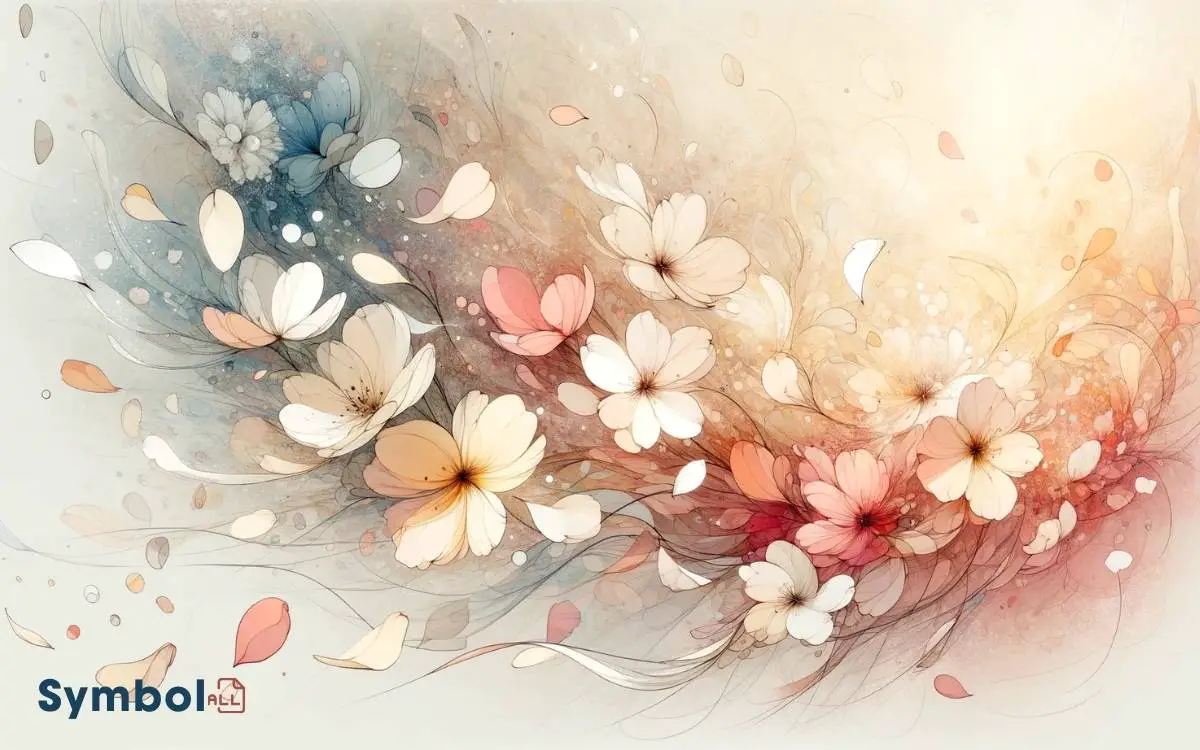
Key Takeaways
The Language of Flowers
Throughout history, people have attributed complex meanings to flowers, employing them as symbols to communicate emotions, intentions, and messages without the need for words. In the intricate language of flowers, each species and color variation holds a distinct significance.
White petals, for instance, often symbolize purity, innocence, and new beginnings, making them a staple in bridal bouquets and funeral arrangements to convey sentiments of fresh starts or eternal peace.
Similarly, yellow petals typically represent friendship, joy, and the promise of a new beginning, making them ideal for cheering up a friend or celebrating a happy occasion.
Understanding these nuanced meanings allows you to select floral arrangements that precisely express your intended message, whether it’s admiration, condolences, or celebration, enhancing your ability to communicate through the silent, yet profoundly expressive language of flowers.
Red Petals: Passion and Love
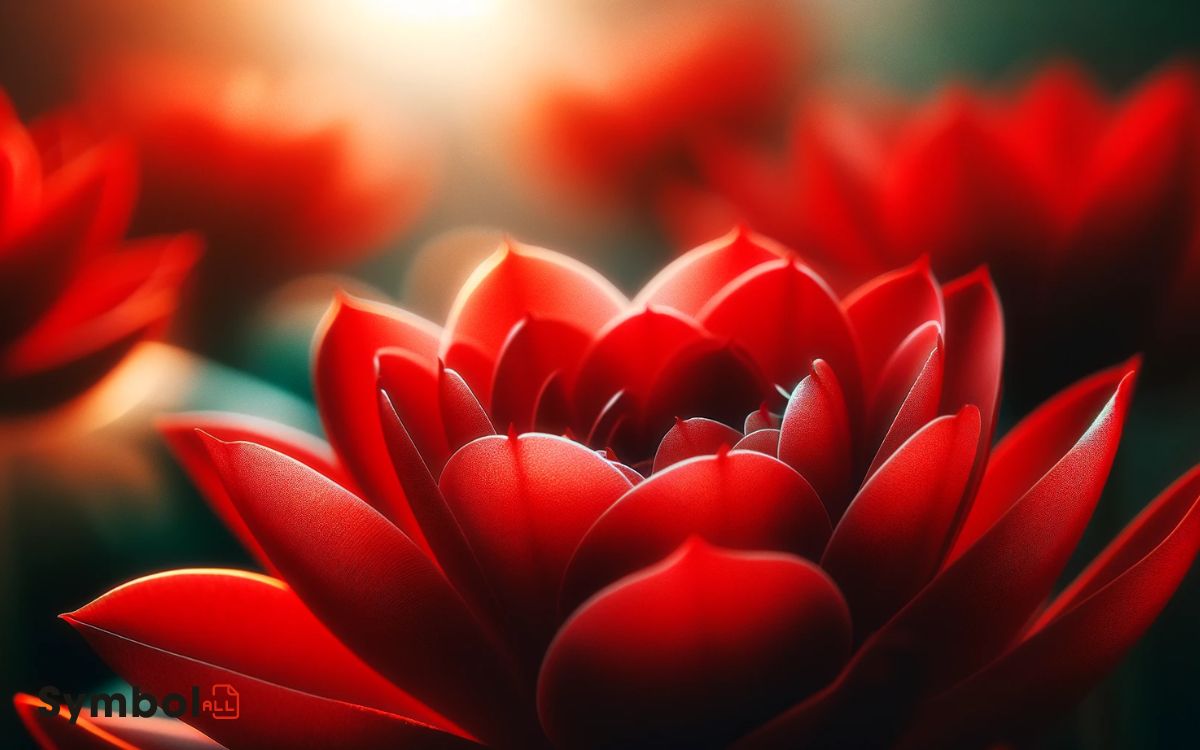
Red petals, often embodying deep emotions, signal passion and love, serving as a universal symbol for expressing profound affection.
In the world of horticulture, red petals aren’t merely a result of pigmentation but a complex interaction of anthocyanins and pH levels within the plant’s tissues.
Each red flower, from the velvety roses to the delicate tulips, has been meticulously bred to enhance its hue, shape, and fragrance, aiming to evoke the strongest emotional response.
When you choose a bouquet of red flowers, you’re not just selecting based on aesthetics; you’re engaging in a centuries-old practice of using botanical knowledge to convey the deepest of sentiments.
Therefore, red petals are nature’s bold statement of love and passion, crafted through the intricate science of botany.
White Petals: Purity and Innocence
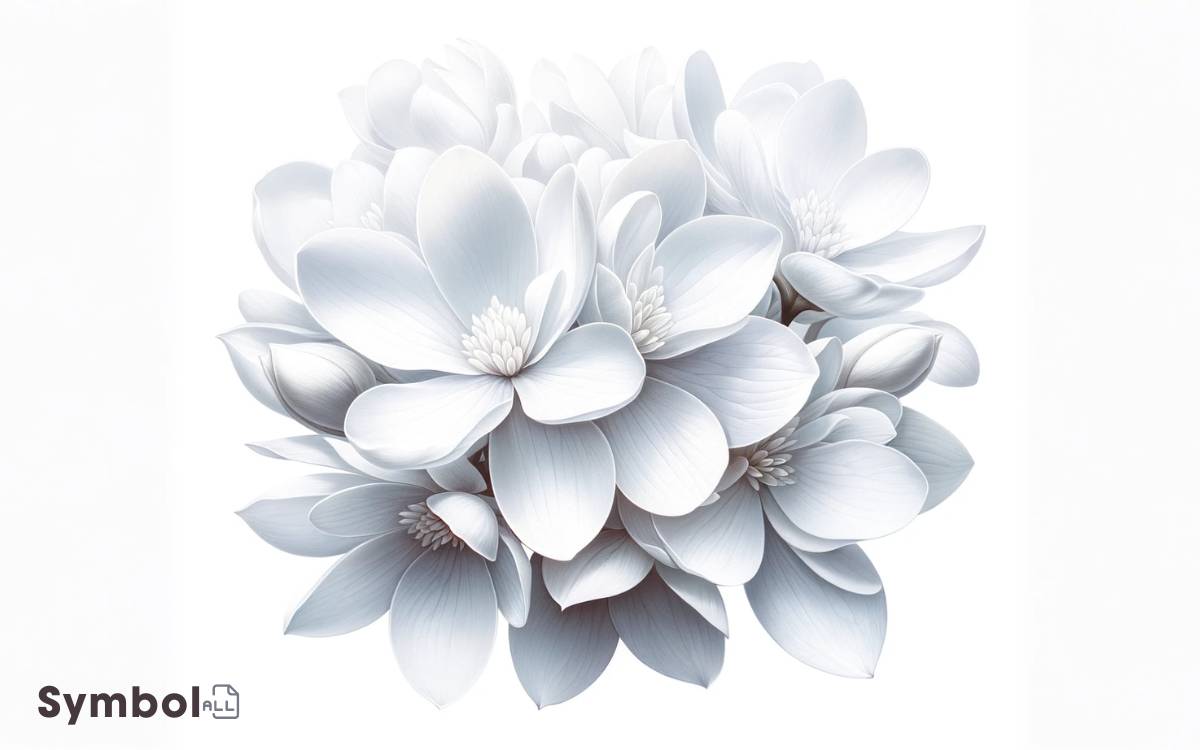
While red petals symbolize a fiery passion, white petals stand as evidence to purity and innocence, embodying a serene beauty that speaks volumes in the language of flowers.
In the domain of horticulture, the symbolism of white petals is explored through:
- Genetic Expression: White petals result from the absence or inhibition of pigment production, a phenomenon meticulously studied in genetic botany.
- Cultivation Practices: Horticulturists often breed plants specifically to achieve a pristine white, manipulating environmental factors and genetic predispositions.
- Ecological Significance: White petals play a pivotal role in attracting nocturnal pollinators, highlighting a symbiotic relationship between flora and fauna.
- Cultural Interpretations: Across various cultures, white petals symbolize a fresh start or a farewell, making them a staple in both weddings and funerals.
These aspects underscore the complexity and depth of white petals’ symbolism, transcending mere aesthetic appeal.
Yellow Petals: Friendship and Joy
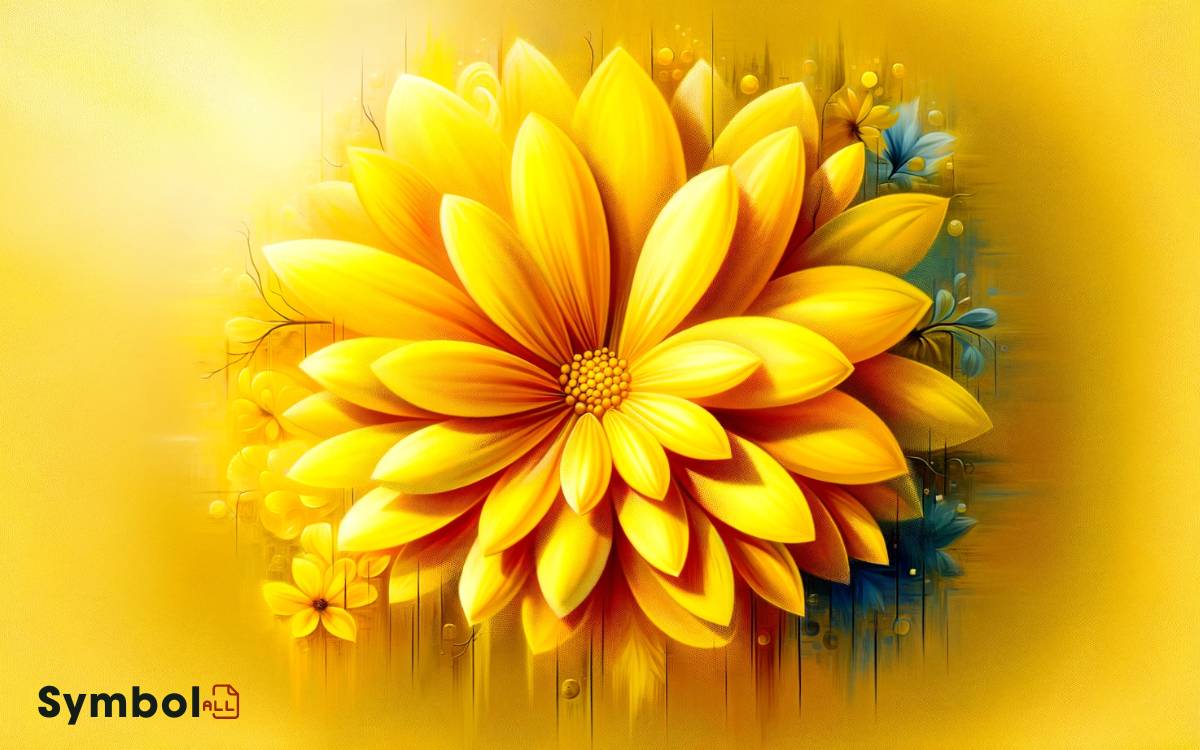
You’ll find that yellow petals, with their vibrant hue, serve as a universal emblem for friendship and joy in various horticultural contexts.
These colors often facilitate bonding by symbolizing shared happiness and are embedded deeply in cultural practices as tokens of appreciation and camaraderie.
Bonding Over Shared Joy
Yellow petals, often symbolizing friendship and joy, play an important role in the horticultural practice of creating spaces that foster social bonds. You’re not just planting flowers; you’re cultivating an environment that encourages connection.
Consider these elements:
- Species Selection: Opt for plant types like Helianthus (sunflowers) or Rudbeckia (black-eyed Susans), known for their vibrant yellow blooms and association with positivity.
- Spatial Arrangement: Group plants in ways that encourage communal gathering, ensuring spaces are inviting and accessible.
- Bloom Synchronization: Time the flowering of these plants to coincide with social events, amplifying the atmosphere of joy and togetherness.
- Maintenance Practices: Engage in shared care routines that not only support the garden’s health but also strengthen communal ties through cooperative effort.
Symbols in Cultural Practices
Exploring further, the symbolism of yellow petals in cultural practices reveals a rich tapestry of friendship and joy intricately woven into social traditions and horticultural choices.
| Culture | Significance of Yellow Petals |
|---|---|
| Western | In many Western cultures, yellow flowers, such as roses and tulips, are emblematic of friendship and happiness, often given to signify care without romantic intention. |
| Eastern | Specifically in Asian traditions, yellow chrysanthemums and peonies symbolize prosperity and good fortune, enhancing their use in celebrations and as gifts to convey joy. |
| Middle Eastern | Yellow flowers, including marigolds, are frequently used in festive occasions, symbolizing warmth and the sun’s energy, promoting a sense of communal joy and unity. |
This nuanced understanding of yellow petals emphasizes their role in expressing social bonds through the language of flora, enriching interactions with a layer of botanical symbolism.
Expressing Appreciation Uniquely
Through the lens of horticultural symbolism, gifting yellow petals stands as a unique expression of friendship and joy, deeply rooted in various cultural practices.
When you choose yellow petals, you’re engaging in a tradition that spans continents and centuries, offering more than just a simple gesture.
Here’s how:
- Chrysanthemums in Asia: Symbolize sun and light, embodying optimism.
- Yellow Roses in Victorian England: Once a sign of jealousy, now universally represent friendship and care.
- Marigolds in Latin America: Used in Day of the Dead celebrations to guide spirits with their vibrant color and scent.
- Sunflowers Globally: Epitomize loyalty and longevity, reflecting the enduring nature of true friendship.
Each choice delivers a message steeped in botanical lore, allowing you to articulate your feelings with nuanced precision.
Purple Petals: Royalty and Dignity
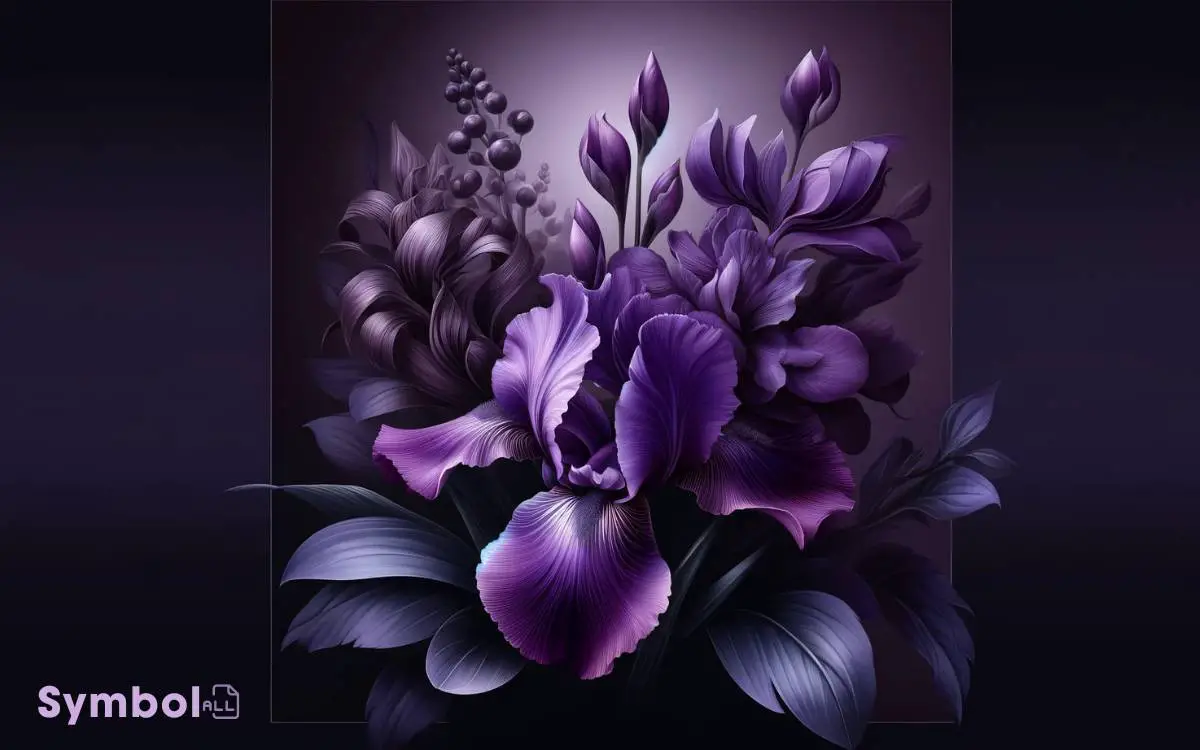
In the world of horticulture, purple petals symbolize royalty and dignity, reflecting centuries of cultural significance and breeding efforts aimed at capturing these esteemed qualities.
Historically, the rarity of purple pigment in nature bestowed an exclusive status on these flowers, making them coveted symbols of wealth and nobility.
Horticulturists have meticulously cultivated varieties like the regal iris or the sumptuous purple rose to embody these traits.
The technical process involves selective breeding, focusing on genetic traits that enhance the vibrancy and depth of the purple hue. This not only augments their aesthetic appeal but also reinforces their symbolic representation of dignity.
Cultivating such flowers requires understanding their specific soil, light, and water needs, ensuring that their royal essence is preserved through careful, knowledgeable gardening practices.
Blue Petals: Serenity and Trust
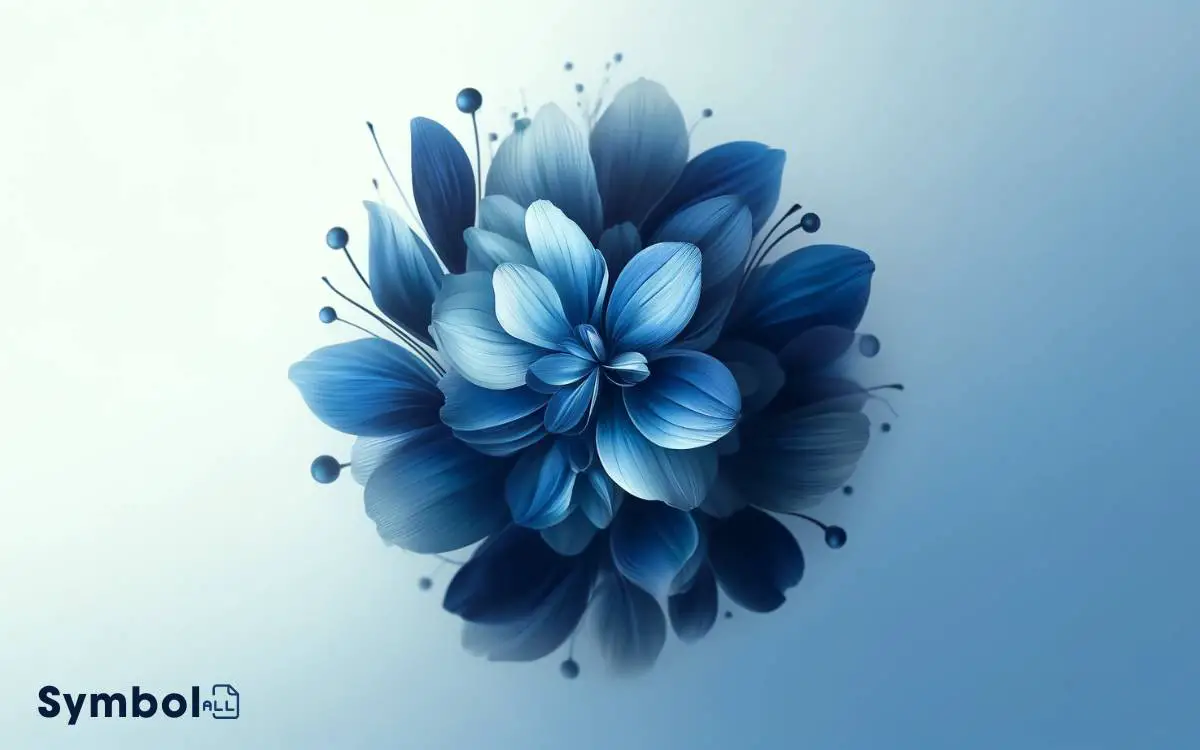
Blue petals, symbolizing serenity and trust, are highly valued in horticultural circles for their calming hues and the meticulous cultivation required to achieve their vibrant tones.
Here’s what you need to know:
- pH Sensitivity: Blue petals often result from specific soil pH levels. Acidic conditions can intensify the blue hue in certain species.
- Light Exposure: Adequate sunlight is essential. Too little can lead to a lackluster color, while too much may scorch the petals, diminishing their vividness.
- Watering Practices: Consistent moisture levels without waterlogging are vital for maintaining the health and color intensity of blue-petaled plants.
- Nutrient Requirements: A balanced fertilizer, rich in potassium, can enhance the coloration of blue petals, as it supports overall plant vigor and flower development.
Understanding these factors guarantees the successful cultivation of plants with blue petals, embodying serenity and trust.
Pink Petals: Grace and Happiness
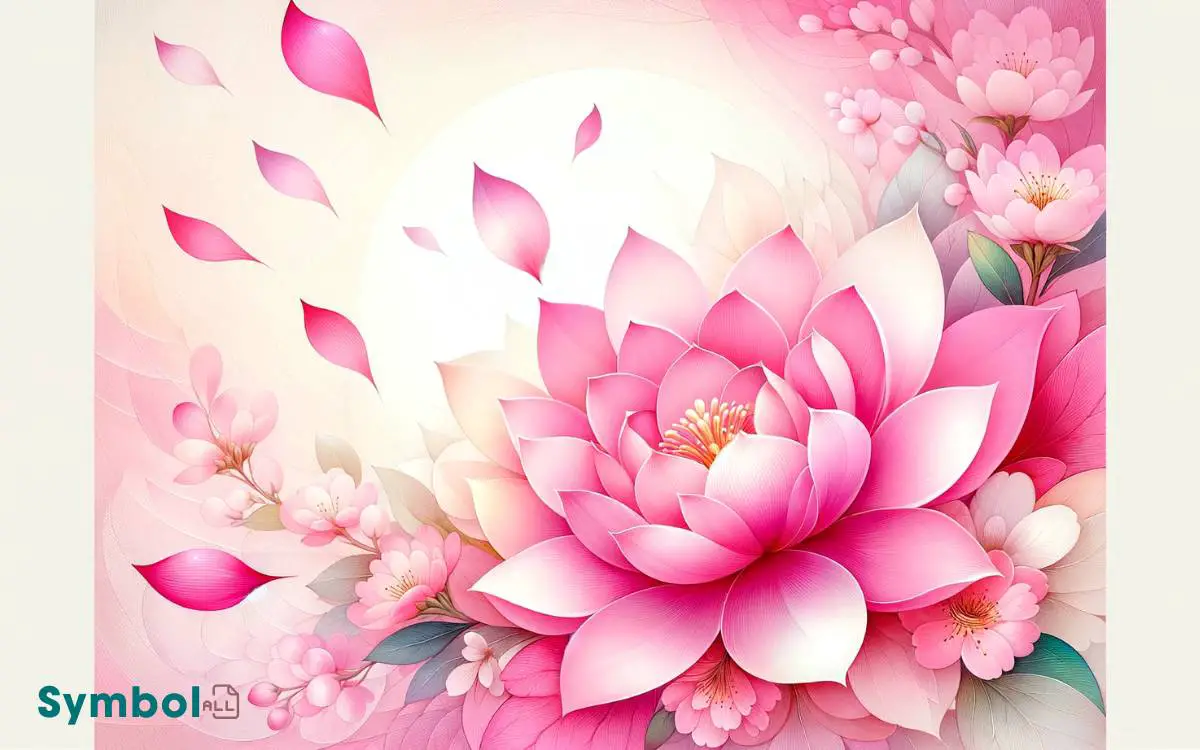
Pink petals, symbolizing grace and happiness, require meticulous attention to soil type and nutrient balance for peak growth and vibrancy.
You’ll find that achieving the perfect hue of pink involves a delicate balance of pH levels in the soil. Acidic soils tend to deepen the color intensity, while imperative conditions can wash out the vibrancy, leading to paler shades.
Additionally, a steady supply of phosphorus is significant for the development of strong, healthy blooms. Without it, your flowers may struggle to reach their full potential.
Orange Petals: Enthusiasm and Energy
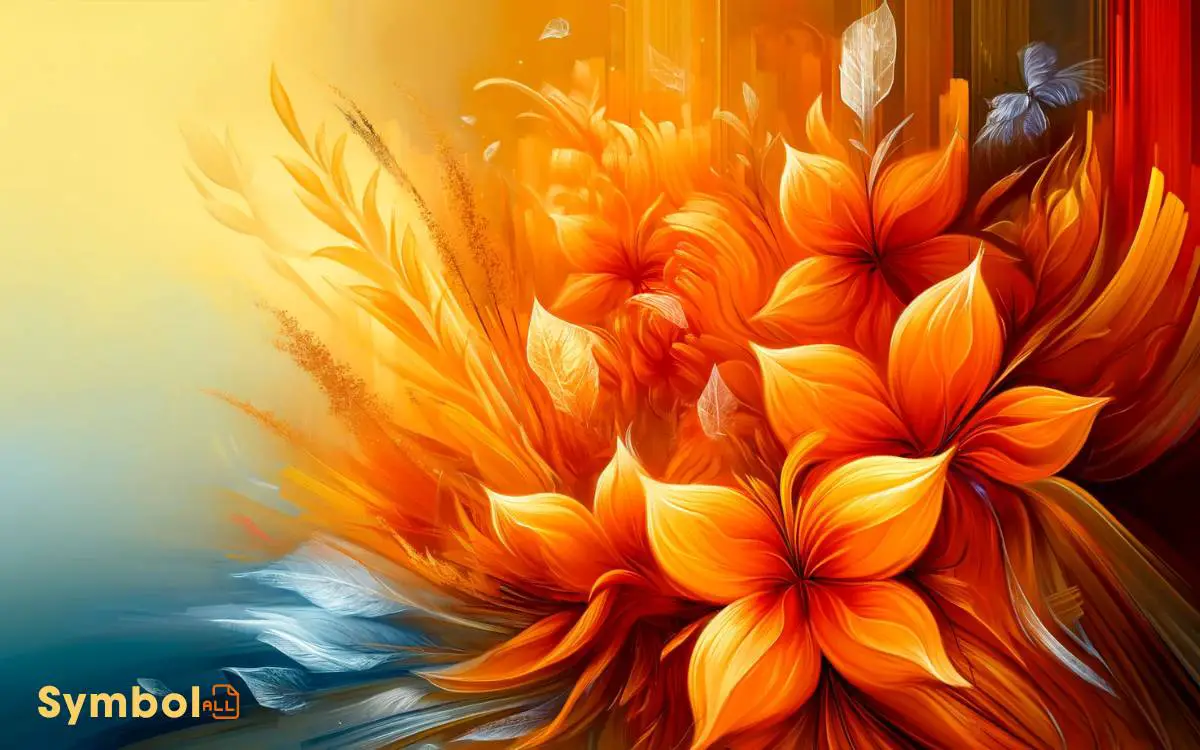
Orange petals exude enthusiasm and energy, necessitating specific light exposure and soil conditions for their vibrant display. To cultivate such a mesmerizing garden feature, you’ll need to comprehend the nuanced requirements that orange-flowered plants typically demand.
Here’s a brief guide:
- Sunlight Exposure: Most orange-flowering plants thrive in full sunlight, requiring at least 6 to 8 hours of direct light daily for ideal coloration and bloom size.
- Soil Conditions: Well-draining soil with a slightly acidic to neutral pH (6.0-7.0) usually suits orange petal plants best, enhancing nutrient uptake and vibrant hues.
- Watering Needs: Consistent moisture without waterlogging is essential. Implement a drip irrigation system for uniform, root-level hydration.
- Fertilization: A balanced, slow-release fertilizer applied in early spring supports vigorous growth and abundant flowering.
Understanding these technical aspects will help you nurture a garden that pulsates with the energy and enthusiasm synonymous with orange petals.
Green Petals: Renewal and Health
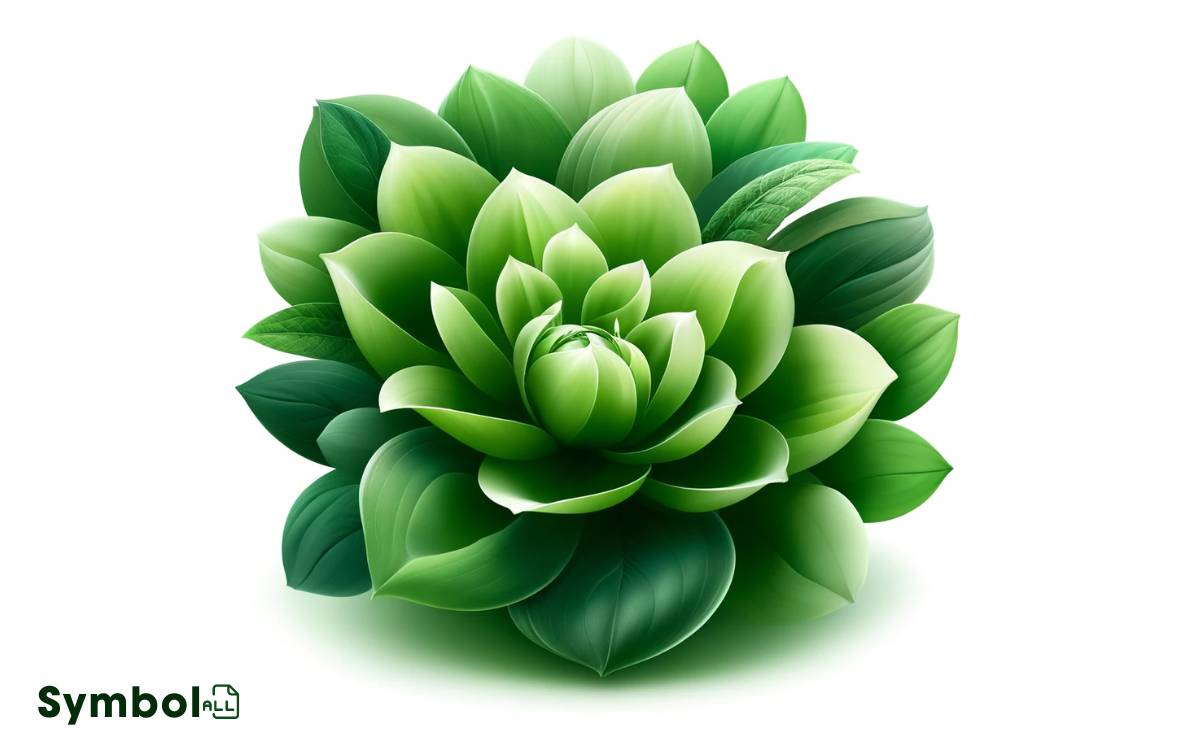
After exploring the vibrant world of orange petals, let’s now focus on green petals, symbolizing renewal and health, which also demand specific care and conditions to flourish.
Green-petaled plants, like the Green Zinnia or Green Hellebore, thrive in well-drained soil rich in organic matter. You’ll need to make sure they’re planted in a location that receives partial to full sunlight, depending on the species’ specific requirements.
Regular watering, keeping the soil consistently moist but not waterlogged, is essential to prevent root rot. Implementing a balanced, slow-release fertilizer during the growing season to support their vigorous growth and vibrant green hue.
Pruning dead or yellowing leaves promptly encourages healthier, more robust plants. Understanding these care nuances ensures your green-petaled plants symbolize renewal and health in their most vivid form.
Black Petals: Mystery and Farewell
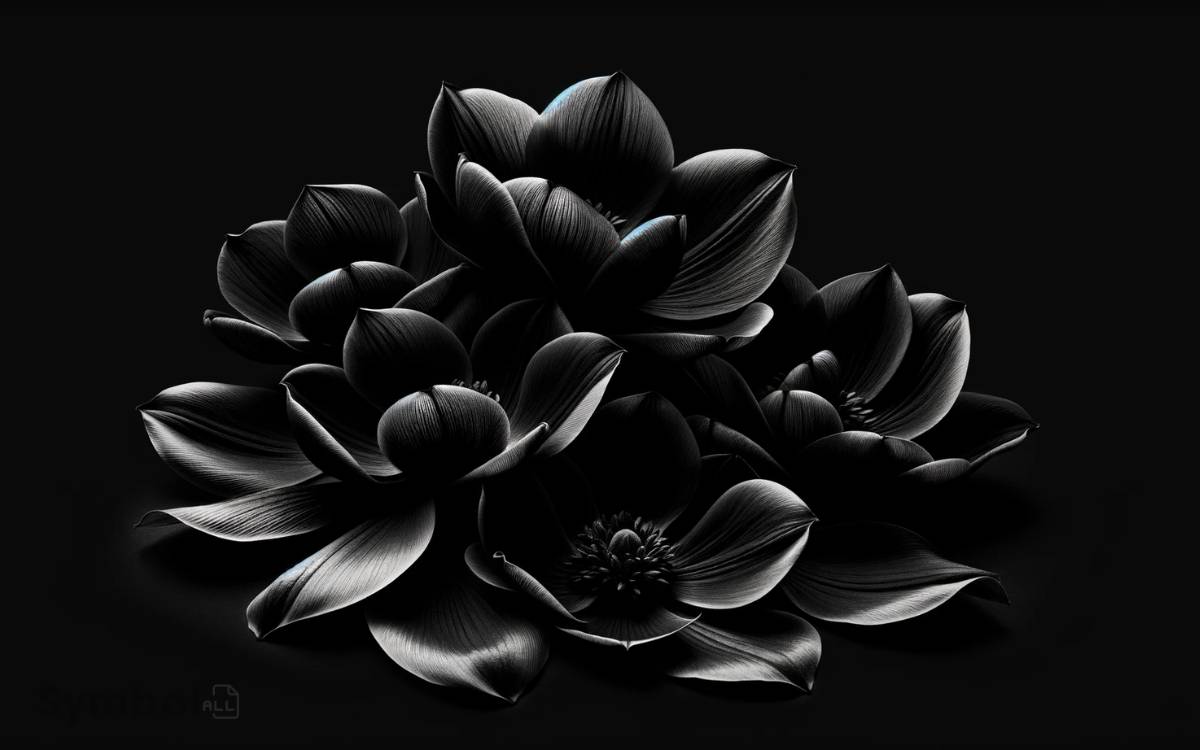
You’ll find that black petals, though rare in nature, carry profound symbolic meanings linked to deep emotions and cultural interpretations. These petals, through their unique pigmentation, often signify mystery, sophistication, and the solemnity of farewells in various traditions.
Horticulturally, the development of black hues in petals involves specific genetic traits and environmental factors, underscoring the complexity and rarity of such flowers.
Symbolizing Deep Emotions
Black petals, often associated with mystery and farewell, embody deep emotional symbolisms within the domain of floriculture.
In horticulture, the cultivation of flowers with black petals is a nuanced practice, focusing on breeding techniques that enhance the depth and richness of color. These petals aren’t just visually striking; they’re imbued with layers of meaning that resonate on an emotional level.
- Anthocyanin Concentration: High levels of anthocyanins contribute to the petal’s dark pigmentation, symbolizing depth and intensity of emotion.
- Selective Breeding: Horticulturists selectively breed plants to achieve the darkest petals, representing dedication and passion.
- Environmental Factors: Soil pH and sunlight exposure can affect petal color, mirroring the complexity of emotions.
- Cultivar Development: The development of specific cultivars aims at expressing unique emotional narratives through color and form.
Cultural Interpretations
How do cultural interpretations shape our understanding of black petals, seen as symbols of mystery and farewell, within the domain of horticulture?
In horticultural practices, the utilization of black-petaled flowers is profoundly influenced by their cultural symbolism. These petals, often achieved through selective breeding or natural rarity, evoke a sense of enigma and ending.
You’ll find that in some cultures, black flowers are presented at funerals as a sign of mourning and farewell, while in others, they’re used to convey deep, unsaid emotions.
Technically, the pigmentation in black petals results from anthocyanins, which are complex molecules responsible for red, purple, and blue hues in plants.
The concentration and composition of anthocyanins, influenced by genetic and environmental factors, are what give these petals their dark, almost black appearance.
Multicolored Petals: Complexity and Celebration
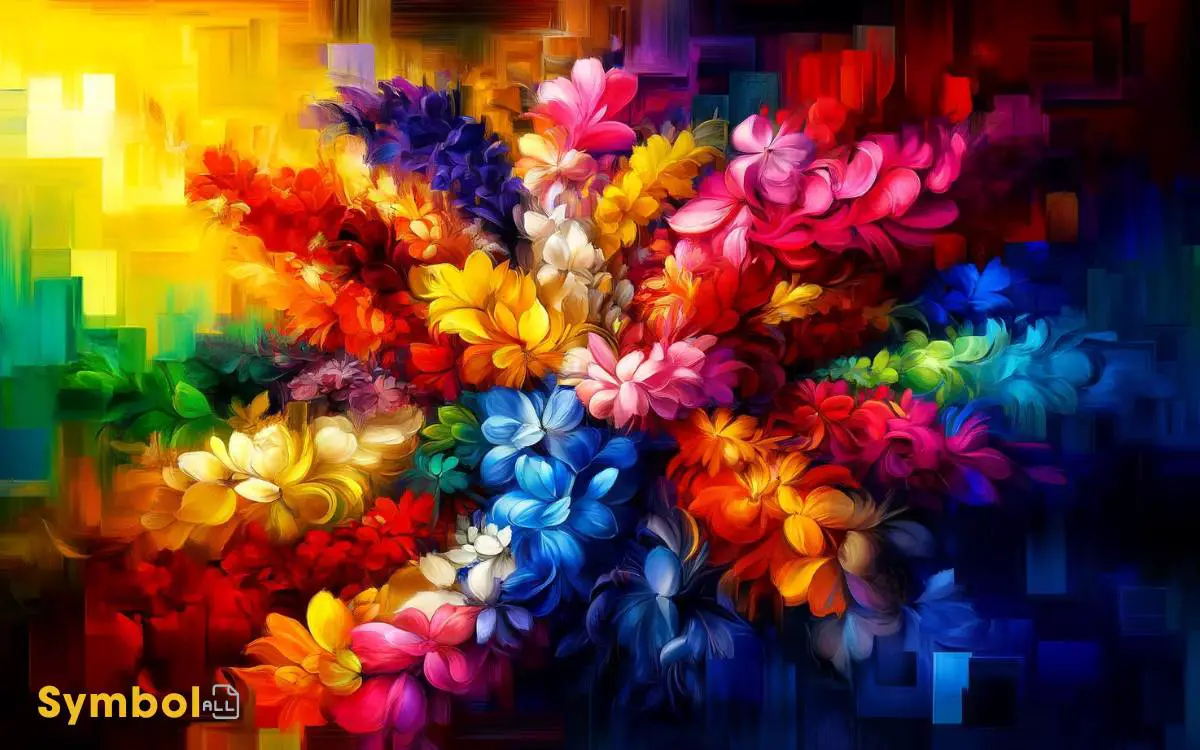
Multicolored petals often signify the botanical world’s intricate diversity, embodying a spectrum of genetic variances and pollination strategies.
When you encounter flowers with multicolored petals, you’re witnessing:
- Genetic Diversity: The expression of genes that results in a wide range of colors within a single species or even a single flower, enhancing its adaptability.
- Pollination Strategies: Color variations can attract a broader array of pollinators, ensuring successful reproduction.
- Environmental Adaptations: Multicolored petals might indicate a plant’s adaptation to various environmental factors, including light and temperature conditions.
- Ecological Interactions: The coloration can influence the plant’s relationship with its surroundings, including its role in the ecosystem and its interactions with other species.
Understanding these aspects offers you a glimpse into the complexity and celebration of life within the plant kingdom.
Historical Significance of Petal Symbolism
Throughout history, flower petals have served as potent symbols, conveying complex meanings across various cultures and epochs. Their morphology, often meticulously documented by botanists, reveals a rich tapestry of symbolic associations. Their vibrant hues and delicate textures have inspired poets, artists, and philosophers alike, becoming enduring motifs in literature and art. The symbolic meaning of flower colors has added yet another layer of depth, with red often representing love and passion, white symbolizing purity, and yellow evoking joy or friendship. These cultural interpretations showcase the profound connection between nature’s beauty and human emotion.
For instance, the bilaterally symmetrical petals of the orchid have been interpreted to signify perfection and spiritual balance, a concept deeply rooted in ancient Greek botany.
Similarly, the ephemeral beauty of cherry blossom petals in Japan, known as sakura, underscores themes of mortality and the fleeting nature of life, a principle that has permeated Japanese aesthetics for centuries.
Additionally, the robust, layered petals of the rose have historically symbolized depth of emotion and complexity of character, qualities that are meticulously cultivated through selective breeding practices.
This intricate web of symbolism highlights the profound impact that petal morphology has had on human culture and understanding.
Cultural Variations in Petal Meanings
You’ll find that petal meanings vary significantly across different cultures, influenced by historical, regional, and religious contexts.
Global interpretations of petals can range from symbols of love and mourning to markers of social status or religious affiliation, each with its own botanical nuances.
This variation underscores the importance of understanding regional and religious petal significances to fully appreciate the complexity of floral symbolism worldwide.
Global Interpretations of Petals
Across cultures, people attribute diverse and symbolic meanings to flower petals, reflecting a wide spectrum of emotions, traditions, and beliefs.
In the horticultural domain, understanding these global interpretations requires appreciating the nuanced roles petals play in plant physiology and cultural symbolism.
Here’s a brief exploration:
- Color Significance: Petals’ colors aren’t merely aesthetic; they serve as critical attractants for pollinators. Culturally, colors like red and white universally symbolize love and purity, respectively.
- Shape and Size Variability: The morphological characteristics of petals, including their shape and size, can symbolize different attributes, such as elegance or resilience.
- Fragrance: Often overlooked, the scent of petals carries profound cultural meanings, ranging from mourning to celebration.
- Arrangement Patterns: The way petals are arranged on a flower speaks to the complexity of nature’s design and can symbolize unity or diversity in many cultures.
Regional Petal Significance
Delving into regional petal significance reveals how cultural variations imbue petals with distinct meanings, rooted in local traditions and ecological adaptations. In arid regions, for example, succulent petals symbolize resilience and the ability to thrive under harsh conditions.
These adaptations aren’t merely survival mechanisms but are deeply emblematic of local cultural identities that prize endurance and adaptability.
Conversely, in temperate zones, the delicate petals of cherry blossoms convey transience, mirroring societal appreciations for fleeting beauty and the ephemeral nature of life.
This specificity in petal symbolism extends to color variations, where the same species might signify contrasting concepts across different cultures, influenced by local flora and historical interactions with these plants.
Understanding these nuances requires a technical appreciation of botany and an awareness of cultural landscapes, providing a richer comprehension of petal symbolism.
Religious Petal Meanings
In various religious traditions, specific flower petals carry profound symbolic meanings, deeply intertwined with spiritual beliefs and practices.
You’ll find that these symbols extend beyond mere decoration, serving as significant elements in rituals, teachings, and expressions of faith.
Here’s a closer look:
- Lotus Petals in Buddhism: Symbolizing purity and enlightenment, the lotus flower’s growth from mud to beauty is a metaphor for spiritual evolution.
- Rose Petals in Christianity: Representing divine love and martyrdom, rose petals are often associated with the Virgin Mary and the blood of Christ.
- Marigold Petals in Hinduism: Used in religious ceremonies, marigolds symbolize surrender to the divine, promoting spiritual awakening and protection.
- Chrysanthemum Petals in Taoism: Reflecting balance and harmony, these petals are used in festivals to honor ancestors, showcasing respect and remembrance.
Petals in Modern Symbolism and Use
Petals serve as important indicators of a plant’s health and reproductive status, offering insights into the intricate processes of pollination and signaling within ecosystems.
In modern symbolism, petals have taken on diverse meanings, reflecting cultural, emotional, and ecological significance. You’ll find that specific colors and types of petals are chosen for their symbolic value in various contexts, from weddings to memorial services.
| Petal Color | Symbolic Meaning |
|---|---|
| Red | Love, Passion |
| White | Purity, Peace |
| Yellow | Friendship, Joy |
| Blue | Tranquility, Trust |
| Purple | Dignity, Success |
Understanding these symbols allows you to select flowers with intention, enriching the message you wish to convey through the language of petals.
Conclusion
To summarize, the language of flowers, through their petals, offers a nuanced way to express emotions and sentiments.
For instance, a florist carefully selecting white lilies for a wedding bouquet taps into the ancient art of floriography, aiming to encapsulate purity and innocence in a single floral arrangement.
This technical, horticultural practice, steeped in history and cultural variations, continues to evolve, enriching our modern expressions of love, friendship, and celebration with every carefully chosen petal.






